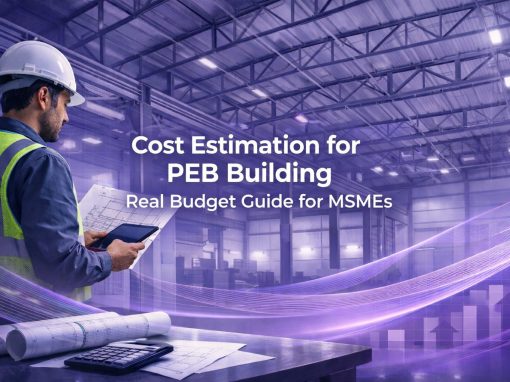Table of Contents
Introduction
In construction, every decision rests on one question: can the material hold when it matters most? For steel bars, the answer comes from testing. The steel bar test is now a standard step before any rebar enters a building site. It checks whether the steel meets strength and chemical benchmarks set by the IS 1786 standard, the base code for reinforcement steel in India.
Over the last few years, both government and private buyers have made this testing non-negotiable. Departments including PWD, housing boards, large EPC contractors, etc. now release payments only after receiving valid test certificates. The aim is simple: minimise structural risk and bring uniform quality across suppliers.
For many MSMEs, this shift has created new operational demands. Producing quality steel is one part; managing paperwork, coordinating with labs, and submitting reports on time is another. As just a missing document or mismatched heat number can lead to:
- Payment delays
- Tender disqualification
- Project rework or blacklisting
Therefore, understanding how the testing process works can help smaller suppliers stay compliant and competitive. Here this guide explains the different types of steel bar tests, the role of Mill Test Certificates (MTCs), and how to handle testing efficiently without adding cost pressure. In today’s procurement setup, quality proof is not an overhead – it’s an entry ticket to serious business.
What are reinforcement steel bars?
Reinforcement steel bars, commonly known as rebars (in Hindi popular as ‘sariya‘), are indispensable materials used to enhance the tensile strength of concrete structures. These steel bars come in various types including, but not limited to, Thermo Mechanically Treated (TMT) bars, and High Yield Strength Deformed (HYSD) bars. Each type brings its own set of properties to a structure, effectively bearing the tensile forces, and thus, making it less likely to break.
Types of Steel Bar Tests (Technical Overview)
Every batch of reinforcement steel bar should pass a set of mechanical and chemical tests before it can be approved for construction use. Thus, these tests confirm whether the steel can perform under real site conditions or not like bending, stretching, or carrying loads without failure.
In India, the procedures and acceptable limits are defined under IS 1786:2016, which applies to all hot-rolled deformed and TMT bars used in concrete work.
Core mechanical tests
These are the most widely performed checks. MSME suppliers, contractors, and buyers should understand what each one measures:
Tensile Test
- Measures the maximum load the bar can withstand before breaking.
- Confirms tensile strength, yield strength, and elongation percentage.
- A basic requirement for every project approval.
Bend and Re-bend Test
- Make sure the bar can bend and then return to shape without cracking.
- It is crucial for structures where bars need to be curved or joined.
- Tests ductility – especially relevant for Fe 500 D or higher grades.
Elongation Test
- IT helps measures how much the bar can stretch prior to breaking.
- Indicates flexibility — important for earthquake-prone or high-stress structures.
- Compression or Torsion Test (when applicable)
- Checks resistance to twisting or compressive loads.
- Usually applied in bridge and foundation projects.
Core chemical tests
- These determine whether the bar’s composition meets the limits for elements. It include carbon, manganese, sulphur, and phosphorus.
Chemical Analysis
- Conducted using spectrometers or wet analysis approaches.
- Double-check the purity of steel and even its corrosion resistance.
- Ensure consistency with IS 1786. And, if any standards that is related to project-specific.
A small change in chemical balance can impact weldability and long-term performance. This is the reason why labs issue detailed composition reports along with mechanical results.
Non-destructive and advanced checks
Certain projects – especially government or infrastructure tenders – may require additional testing.
- Ultrasonic Testing (UT): Detects internal cracks or voids without damaging the bar.
- Hardness Test: Evaluates surface resistance to deformation.
- Impact Test: Measures how the bar performs under sudden force/ shock.
These tests are although voluntary in all cases, but, these are often recommended when bars come from either new suppliers or small rolling units. For small and mid-sized suppliers, understanding these tests helps in three ways:
- To ensure the product qualify the client specifications before dispatch.
- To prepare in advance documents for quality audits or tender submissions.
- To minimise the risk of rejection or re-testing at the buyer’s end.
Testing is not just a lab routine; it’s a reputation check. When reports are clear, consistent, and traceable, businesses stand out as dependable suppliers in a crowded market.
Different tests for reinforcement steel bars/rebars, TMT bars, HYSD bars
Following are the different tests for the different types of steel bars, including rebars, TMT bars, and HYSD bars:
| Test | Rebars | TMT Bars |
HYSD Bars |
|
Tensile test |
Yes | Yes |
Yes |
| Yield stress test | Yes | Yes | Yes |
| Elongation test | Yes | Yes | Yes |
| Bend test | Yes | Yes | Yes |
| Chemical analysis test | Yes | Yes | Yes |
| Ultrasonic testing | Yes | Yes | Yes |
| Fatigue test | May be performed | May be performed | May be performed |
| Torsion test | May be performed | May be performed | May be performed |
| Impact bending test | May be performed | May be performed | May be performed |
| Corrosion test | May be performed | May be performed | May be performed |
| Hardness test | May be performed | May be performed | May be performed |
| Flexural test | May be performed | Yes | Yes |
| Twist test | May be performed | Yes | Yes |
How to test steel bars
There are two primary environments where steel bar testing takes place. These include the laboratory and the field testing. Here’s a comparative analysis of both:
|
Aspect |
Laboratory testing |
Field testing |
| Environment | Controlled, with specialised equipment | On-site, potentially less controlled |
| Personnel | Trained technicians and engineers | Construction workers, field engineers |
| Equipment | Sophisticated, high-precision instruments | Portable, sometimes less precise |
| Tests conducted | Tensile, chemical analysis, etc. | Bend, rebend tests, etc. |
| Accuracy | Generally, more accurate due to controlled conditions | Might be slightly less accurate due to environmental variables |
| Time | Can be time-consuming due to the detailed nature of tests | Generally quicker as they are conducted on-site |
| Cost | Potentially higher due to the sophisticated equipment used | Potentially lower as it involves less sophisticated apparatus |
| Purpose | Deep analysis to ensure compliance with defined standards | Quick verifications and on-site quality control |
Further, understanding the differences between laboratory and field testing will help in choosing the right approach depending on the specific requirements of your construction project. Thus, ensuring both safety and efficacy in your undertakings.
Importance of steel bar test
Following are the key reasons why testing reinforcement steel bars is important:
- Ensure structural integrity, safety, and meeting regulatory standards.
- Facilitate cost savings through early detection of material defects and enhancing the lifespan of structures.
- Support optimised design and encourage innovation in construction.
- Aid in the development and sustainable use of better construction materials.
- Reduce legal liabilities and meet insurance requirements through stringent testing protocols.
Charul is a content marketing professional and seasoned content writer who loves writing on various topics with 3 years of experience. At Tata nexarc, it has been 2 years since she is helping business to understand jargon better and deeper to make strategical decisions. While not writing, she loves listing pop music.





